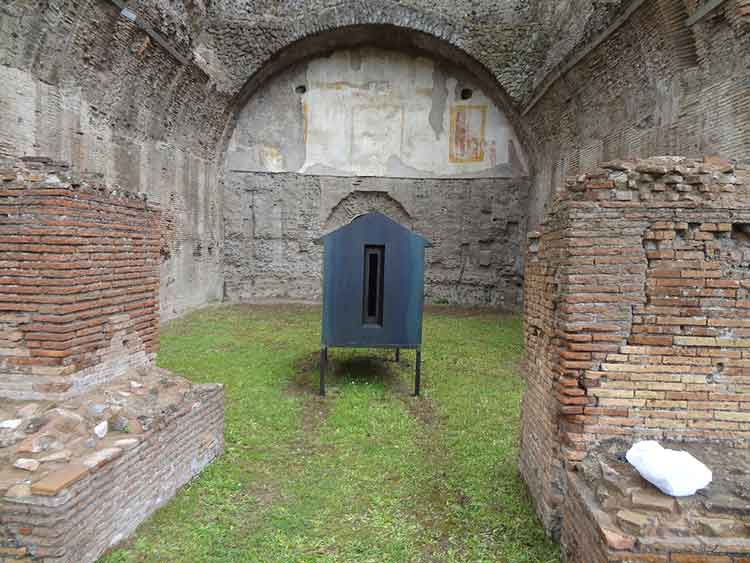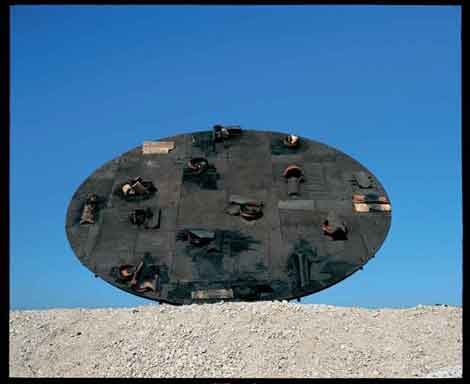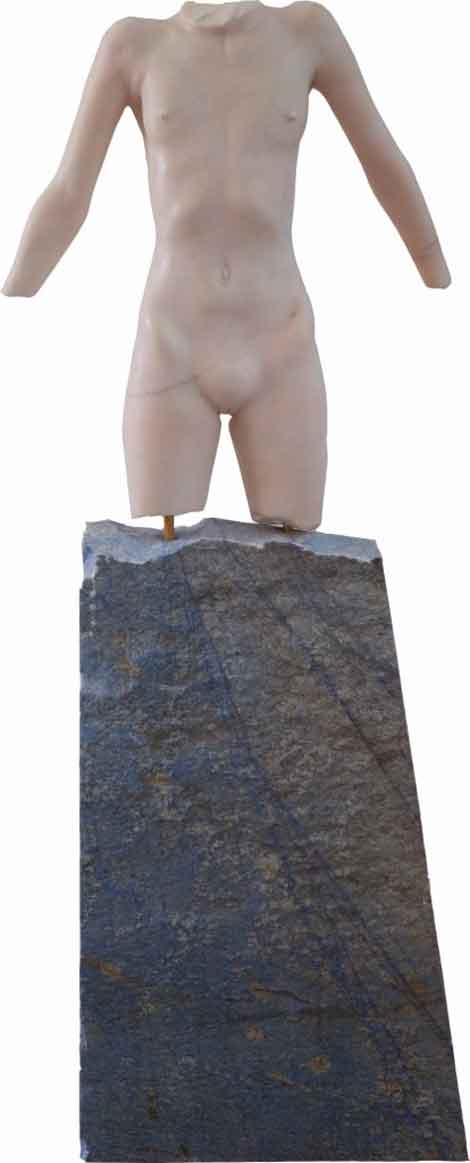The Palatine Hill, and the Roman Forum beneath it, is a marvelous place to visit if just for the archeology and history. Now a viewer can see how contemporary artists interact with these ruins on a large scale. The exhibition “Post Classici,” curated by Vincenzo Trione, places site specific work or re-contextualizes existing works by artists such as Jannis Kounellis, Michelangelo Pistoletto, Guilio Paolini, Mimmo Paladino, Claudio Parmiggiani, Nino Longobardi, Mimmo Jodice, Gregorio Botta, Roberto Pietrosanti in the monumental spaces of the forum, its temples and stadiums. Placed mostly outdoors, the art is in an interesting conversation with the remains of the ancient architecture, but even more significantly, the implicit and explicit contrasts are more incisive than the usual simple juxtaposition of very old and the relatively new.
Jannis Kounellis’s “Senza l’antica prospettiva (Without the Ancient Perspective)” 2013 places fragments of columns, pillars and stairs from the ruins in a rectangular pattern on the ground, just at the edge of more organically collapsing walls and ceilings. The difference between his control of the otherwise chaotic historical remains and the more authentically displayed disarray of the architectural vestiges asks what we, as people living in the contemporary world, would make of these ruins. Are they just other found objects and what is, literally, their place in our world?
Mimmo Jodice has been photographing antique statutes and busts from around the Italian peninsula for years. For this exhibition, he has placed prints of previously photographed work in proximity with statuary in the Palatine Museum. He has paired the works by looking for similarities in their wear and tear such as a missing limb or a partially obliterated face. Collectively titled “Ex voto” (a votive offering to a saint or to a divinity in gratitude or devotion) and dated with two numbers the first corresponding to the original photograph and the second with this year, Jodice introduces a coefficient of ageing into the classical continuum and in doing so points out our frequently inadequate stewardship of the past.
Gregorio Botta’s “Ulisse (Ulysses),” 2013 is a steel and water sculpture that has been situated in an open space resting within the shell of an amphitheater of the Stadio Palatino. The metal structure looks like a house or temple with slots cut into the front and both sides through which a viewer can see and hear an ongoing shower of water pelting the floor of the raised miniature building. Playing off of the unenclosed building in which it is housed, Botta’s sealed sculpture heralds the time in which shelter is no longer and when that which was once deemed permanent is seen as part of a now past “classical” history. Like the myth of Ulysses, the voyage through time is made up of tests of time where impermanence and entropy reigns.
Reinterpreting classical motifs has been part of the Italian art and literary scene since antiquity. This time around, however, the interplay between contemporary and ancient forges a connection that goes beyond the merely scenographic and, with no small degree of critical reasoning, asks what is it that we can hope to reclaim from antiquity and make meaningfully ours today.
This exhibition ended Sept. 29
For more info: www.archeorm.arti.beniculturali.it/mostr





